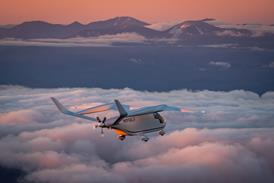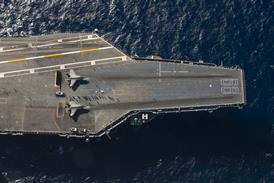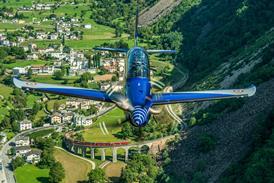Guy Norris/LOS ANGELES
THE FIRST ELEMENT of a new real-time information system for US Navy and Air Force combat aircrews will be test flown in July on a McDonnell Douglas F-15E from Nellis AFB, Nevada.
The first test flights of the entire airborne tactical-information-management system (ATIMS) will take place in September on a McDonnell Douglas F-18.
The developers hope that an entire range of elements now emerging from the US Navy-led ATIMS programme will be deployable in part, or as a complete package, on combat aircraft by 2000.
These range from the McDonnell Douglas AV-8B, the Grumman F-14 and the F-15 to the Lockheed P-3 and the Bell Boeing V-22.
"The primary goal is to get real-time information to the pilot. There are large amounts of data to be presented, and we are doing it in such a way that it will not be overwhelming," says Dave Churchman, Boeing principal investigator of mission-management technology programmes.
"We are basically forming a warfare information focus to get data on new threats and new targets to the shooter as quickly as we can," he adds.
The Boeing Defense & Space Group is assembling and integrating components of the ATIMS under subcontract to prime contractor GDE Systems of San Diego, California.
Other ATIMS team members include Loral, which is supplying a defence-management system; California Microwave, mission planning; Honeywell, display mission computer and digital map; and GEC-Marconi, which is providing datalinks.
Mass storage devices, are being supplied by Mountain Optech and Computing Devices International, while programme support, is being provided by ARINC and Veda.
A datalink developed by Geodynamics has been used in development trials to link ATIMS simulation equipment at Boeing's integrated technology development laboratory (ITDL) in Seattle, Washington, with live test-range data from an exercise at the White Sands Missile Range, New Mexico.
Data was gathered from aircraft fitted with surveillance sensors and passed to the ITDL via a real-time system developed jointly by the USAF Space Warfare Center, the Naval Air Warfare Center and the Air Force Wright Laboratory.
The main elements of the ATIMS include the Loral-developed defence management system. This parallel multi- processor "...listens out for the bad guys and computes a reaction to unexpected threats", explains Churchman.
Other elements include the Honeywell flat-panel colour display and moving-map tactical displays, and the mission recorder.
The recorder stores data on the flight, as well as all threats and targets, on a magneto-optical disc with four to five gigabytes of memory capacity.
"This will provide a replay of the mission as well as an intelligence update," says Churchman.
The team hopes to expand the ATIMS suite in 1996 to include a next-generation helmet-mounted display with synthetic, or virtual-reality, type information.
"Once we have proven all these technologies in live-fire exercises, then it will begin to be taken up by the individual systems programme offices," concludes Churchman.
Source: Flight International























